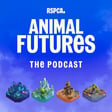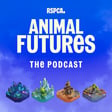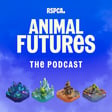
Episode 5 - Learning about RSPCA Mallydams Wood with staff and volunteers
Welcome to Walk on the Wild Side, an RSPCA podcast. We’ll meet people from this 200-year-old animal welfare charity, and learn about what they do. We’ll discover more about the amazing wildlife all around us, and how we can help it thrive, and be inspired to get outdoors and into nature.
In the final episode of the series, Holly spends the afternoon at RSPCA Mallydams Wood and meets its staff and volunteers. She gets to look inside the X-ray room and high-intensity care unit with vet surgeon Jo and student Emma, speaks to volunteer Debra in the bird holding area, and asks supervisor Jess about trainee animal rescue officer Poppy’s unusual headgear. During the summer the patients at Mallydams Wood are usually birds, but for most of the year the wildlife centre resounds with the barking of seals – listen to a clip from one of our archive films about how seals came into our care in the 1960s.
Host: Holly Cushen
Writers: Holly Cushen and Morwenna Kearns
Producer: Morwenna Kearns
Audio producer: Chris Attaway
Wildlife advisor: Rebecca Machin
Executive producer: Sarah Millerick
Recorded on location at RSPCA Mallydams Wood near Hastings
Wildlife advice: rspca.org.uk/adviceandwelfare/wildlife
Work for the RSPCA: jobs.rspca.org.uk/jobs/home
Volunteer for animals: rspca.org.uk/getinvolved/volunteer
More information on how to get involved: rspca.org.uk/getinvolved/donate/audio



